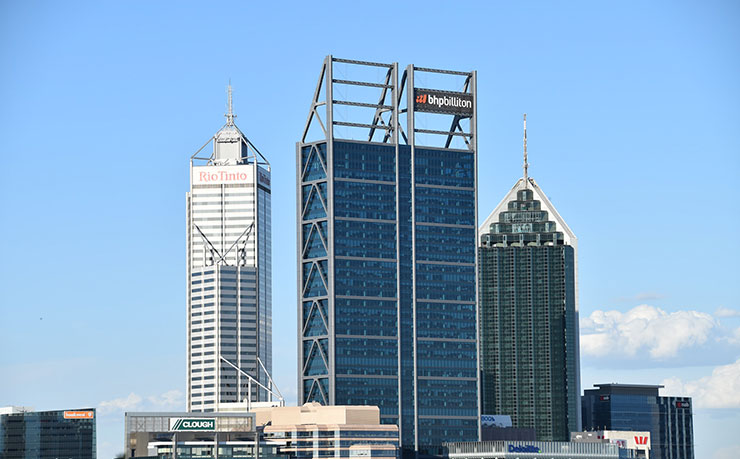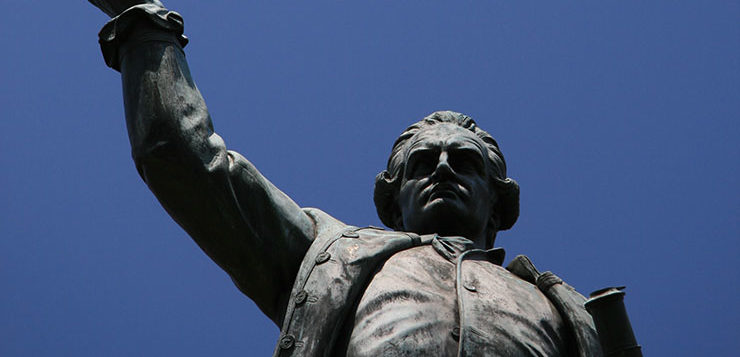In Australia, you can blow up 46,000-year-old Aboriginal heritage and make money from it. But vandalise a statue of Captain Cook…? Georgia McGrath from Marque Lawyers explains.
Hypocrisy, much? This weekend, two women were arrested and charged with destruction of property for vandalising the statue of Captain Cook that stands (for now) in Sydney’s Hyde Park. Police are also searching for the person who sprayed red paint on statues of Tony Abbott and John Howard in Ballarat.
These acts are a continuation of a global trend of vandalising or, in some cases, cutting down statues in cities around the world depicting, quite frankly, racist men as part of the Black Lives Matter protests.
In the meantime, Rio Tinto last month literally pulverised 46,000 years of human history with the consent of the Western Australian government. All they had to do was deliver a half-baked apology and wait for the news cycle to move on.
These events share common ground. In both instances, a place or an object that held cultural and historical significance for a certain group of people, a tangible thing that represented more than just the sum of its parts, was harmed.
In one instance, the people responsible were arrested and may cop a criminal record. In the other, the people responsible simply have to engage their media team.
Siri show me white fragility #BLM #blacklivesmatteraustralia #captaincook pic.twitter.com/guKkujapDv
— Annaliese Constable (@FistyScent) June 12, 2020
When did it become acceptable to destroy one part of our national story but not another? Along what lines has our government chosen to split the divide between vandalism that will get you locked up and state-sanctioned destruction?
Perhaps the answer lies in legislation that prohibits the destruction of sacred Indigenous sites, but in the next breath, allows mining companies to operate with impunity.
The WA Aboriginal Heritage Act purports to protect Indigenous sacred sites, yet allows them to be destroyed with ministerial consent. The Act has been under review since 2018 but the WA Government has in the meantime continued to grant consent to companies like Rio Tinto to lawfully destroy Aboriginal heritage.
Apparently Rio Tinto’s iron ore chief executive Chris Salisbury has openly acknowledged to staff that the company’s apology for blasting the Juukan Gorge cave was carefully worded to apologise only for the distress caused, rather than the blast itself, so as not to admit any wrong-doing. So, not an apology at all.
Yes, Rio Tinto was within its legal rights to blast Juukan Gorge. However, there is a divide here between what legislation sanctions and what a mining company’s social licence can tolerate.
Rio Tinto’s actions in the Pilbara sparked outrage. It also sparked further investigation which revealed that BHP Billiton has plans to destroy at least 40 significant Aboriginal sites in the Pilbara using the same consent loophole that Rio Tinto relied on.
BHP was given the go ahead by the minister in late March this year, raising the question of why a moratorium hasn’t been placed on these consent orders while the Act is under review, particularly when the consequences are so irreparable.

BHP, clearly learning from its competitor’s misstep, has said it won’t proceed with the planned expansion of its own iron ore mine without further consultation with traditional owners. It’s a nice sentiment. Whether it means anything remains to be seen.
Across the world, voices of protest are spurring governments and corporations to take action to protect the integrity of black lives, black bodies and black cultures. Where our institutions are paralysed by apathy, direct public action is filling the gaps.
It’s a time for our current leaders to reflect on what they will be remembered for. Will their legacy be one that protects a statue of Captain Cook with a police guard but stands idle while mining companies pillage sacred sites and literally destroy history for profit?
Who are the real vandals here?
Donate To New Matilda
New Matilda is a small, independent media outlet. We survive through reader contributions, and never losing a lawsuit. If you got something from this article, giving something back helps us to continue speaking truth to power. Every little bit counts.




